If you’ve worked in a restaurant kitchen, you probably understand the rush a crazy busy dinner service can provide. If you haven’t, consider the amalgamation of a 12-hour shift on nowhere near enough sleep, where fire and knives are the principal tools for creating 200 artistic but nourishing plates of food, and presenting them to 50 people with judgmental palates, high expectations and a growing number of allergies. And then imagine loving every second of it.
When my food friend Ali Waks-Adams asked me to help her pull off a pop-up dinner at Brunswick’s Trattoria Athena, the adrenaline junkie in me immediately signed on. Thus Butter+Salt, a name that denotes the two elements we think make food taste really good, was born.
Our own dinner was a small part of a lively pop-up dinner scene in the United States. A pop-up dinner happens in one of two ways. A renowned chef brings her food into a non-traditional venue, such as a park, gallery or industrial warehouse to create a unique dining experience. Or an established restaurateur hands over his establishment to a guest chef – one who is between gigs, looking to establish a brand or test the waters for a new cuisine – and the latter give diners a taste of something different in a familiar place for just one night.
According to EventBrite, an online ticketing service, the number of pop-up dinners for which it sold tickets nationwide has grown by over 80 percent in the past two years. In Portland alone, last winter Vinland chef David Levi opened his kitchen to guest chefs on Tuesday nights, in August chef Yana Gilbuena cooked in the O’Maine Studio & Media Kitchen to promote her native Filipino food and in September, chef Anders Tallberg popped-up at Tandem Coffee to preview his forthcoming restaurant, Roustabout (it has since opened).
FLASH IN THE PAN
Pop-ups done right are triple-win scenarios: The guest chef gets a platform, the diner gets a great meal and the host gets a cut of the profits. But this winning trifecta comes to pass only if the guest chef is particularly devilish about the details, every single one. In this case, the guest chefs, the detail directors, were Ali and I.
Ali had spent part of her summer making desserts for Trattoria Athena. When chef/owner Tim O’Brien, who also runs Enoteca Athena, switched to pared-down winter hours at Trattoria, Ali saw an opening in which to push her pop-up agenda.
Ali has a background of long stints in commercial kitchens, the PR trenches, and her family’s event-planning business; her goal at this point in her career is a pop-up production company that will stage unique dining experiences throughout midcoast Maine. My own endgame centers on spending more time writing about food than producing it, but with each opportunity to work in a professional kitchen, I gain a deeper understanding of the food and producers I write about. In this particular case, preparing the food was the easy part. Navigating the endless details required to successfully pull off this one-shot meal proved to be the real education.
Ali’s preliminary planning outlined staffing requirements, food cost percentages, and proper insurance and licensing coverage; and set a reasonable ticket price and expectations for what she, Tim and I could expect to earn ourselves.
With a $65 ticket price, we could manage a 30 percent food cost for a four-course dinner, hire three waitresses, a hostess, a line cook and a dishwasher, and cover tax and tip. We’d originally planned to sell wine pairings via our online ticket agent BrownPaperTickets.com (EventBrite charges on average $2 more in fees per ticket than this outfit), but for accounting and licensing reasons, it was better to sell wine at the dinner itself.
Choosing menu items was a delicate dance between friends who collectively love food but individually sport different palates and exercise strong opinions. Ali held her ground on an oxtail marmalade appetizer and a puckering lemon tart for dessert. Exclusively local seafood and a mandatory cheese course marked my lines in the sand. While sipping wine after a day of recipe testing for these four structured courses, we leisurely lobbed ideas for amuse bouche and palate cleansers back and forth, settling on a croquette with toasted dulse and gruyere and a grapefruit, Lillet and thyme concoction, respectively.
Filling the chairs involved reaching out to personal connections, implementing a concerted PR plan through conventional and social media channels, and biting our nails as just two weeks before the event only 12 of the 50 tickets had sold. As the date drew closer, and articles and a TV spot about Butter+Salt hit, tickets sold out and we amassed a sizable waiting list. We let out a sigh of relief, just before taking a deep breath to calm our nerves over the prospect of pumping out over 300 plates of food (two seatings, 100 guests, several courses).
Ali translated recipes into order sheets, identifying where it made most sense to source ingredients. We weighed the convenience of using a distributor to lock in the best price on local carrots against its 50 pounds minimum, eventually deciding farmers market seconds were the better buy for us. Oxtail proved an expensive item because yield – the volume of usable meat once they’d been cooked – was very low. Using a combination of oxtail and beef shins from a local farm gave us the flavor we wanted at a price we could afford. We held steady on paying good money for excellent bread from Standard Baking but conceded that while we really wanted crisp white cotton napkins on the table for a special night, Trattoria’s house blue ones would do – would have to do – just fine.
‘THINK WHAT COULD GO WRONG’
Over a mind-numbing flurry of texts, hundreds of emails, dozens of phone calls, four shopping trips and two daylong recipes testing marathons, we meticulously planned our dinner. Once we’d finalized our blueprint, Ali started catastrophizing as Phase II of our readiness strategy. “Think about all the things that might possibly go wrong,” was her advice five days before our Nov. 4 event. “Then we’ll be ready for whatever happens.”
When the local clam digger called on Monday morning to say that heavy rains over the weekend meant that he couldn’t dig the wild count necks we wanted, we upped the fish distributor’s order. When there was not enough refrigerator space on Tuesday to safely store the fish stock overnight, we put it in the freezer and factored thawing time into the game-day prep schedule. When Ali realized the bread order had not been placed, she set her alarm for 4 a.m. to get up and call it in. When the ice cream canister didn’t freeze the sorbet, we made granita on a baking sheet instead. Pretty good improvisation for a pair of 40-somethings who’d worked 20 of the last 30 hours and still had to feed two seatings of a packed house.
We’d softened and whipped local butter, decanted Maine sea salt into tiny wooden bowls, sliced radishes paper thin and left demi-baguettes wrapped in brown paper and twine on the tables before guests arrived. With these elements, we instructed guests to experiment with how Butter+Salt could make many lovely things taste just that much better.
The single-bite, explosive croquettes topped with just a single dab of parsley coulis set the tone for the warm courses to follow. The small Ball jars used to transport the oxtail marmalade topped with pickled red onions returned to the kitchen empty enough to look like they were licked clean, save one. The diner, after tasting it, had politely asked her server if there were meat in the dish. She hadn’t let us know that she didn’t eat beef. The bouillabaisse was radiant with the bright red of lobster meat, deep blue of wild mussels, black points of peekytoe crab claws, and both the white and dark meat of Atlantic pollock, all swimming in a saffron broth made from local fish bones. For timing’s sake, we served the palate cleanser in aperitif glasses on the dessert plates. Watching the diners first sample the candied grapefruit peel on top and then take the time to at once savor the ice and name its flavors was a highlight for me. They devoured the lemon tart, too, along with the meringues and the sprinkling of pistachio brittle.
In the end, our customers were not as demanding as we feared, maybe because 42 of the 52 people who attended knew Ali or me from some other facet of our lives. And while they may have had high expectations for their evening out, our own expectations were definitely higher. Even by our own yard stick, however, we nailed it, and we are looking forward to popping up all over again in January.
Christine Burns Rudalevige is a food writer, recipe developer and tester, and cooking teacher in Brunswick. Contact her at:
cburns1227@gmail.com
Send questions/comments to the editors.

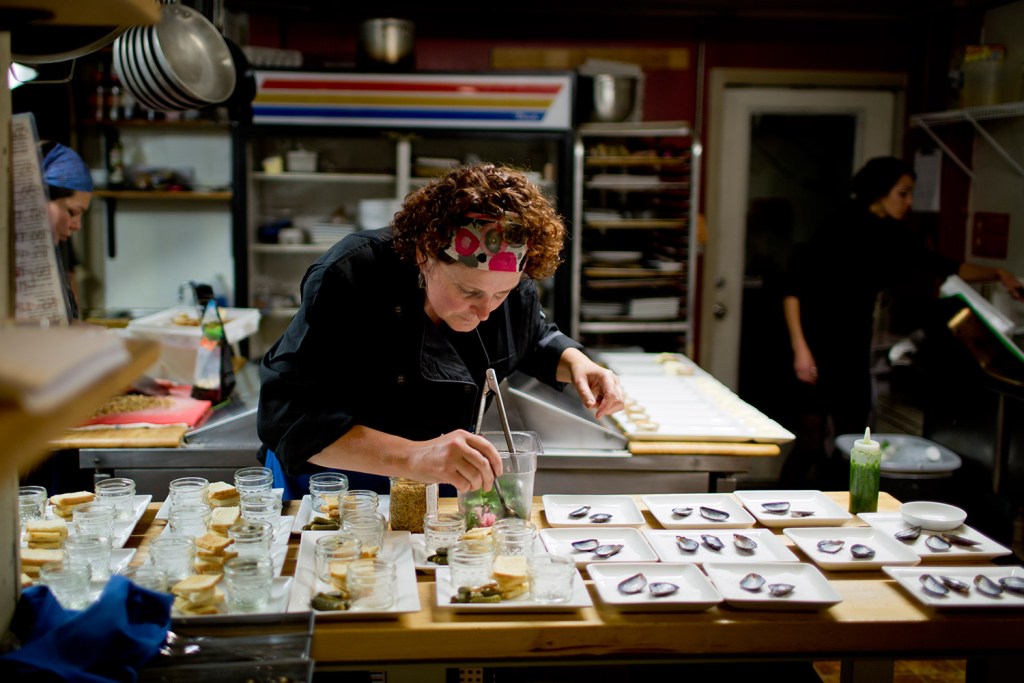
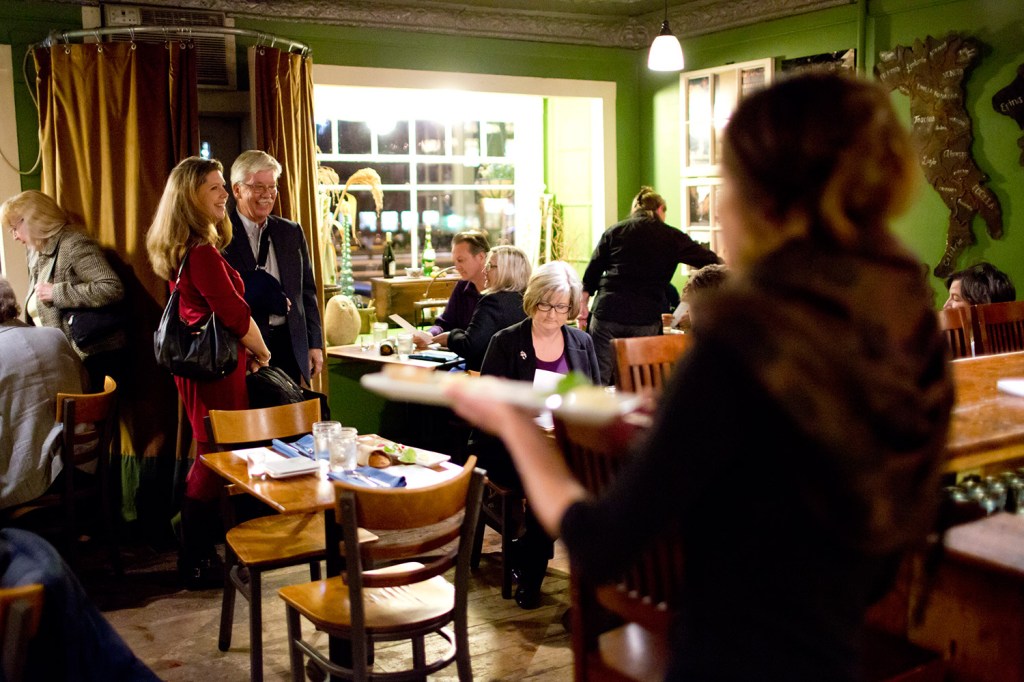
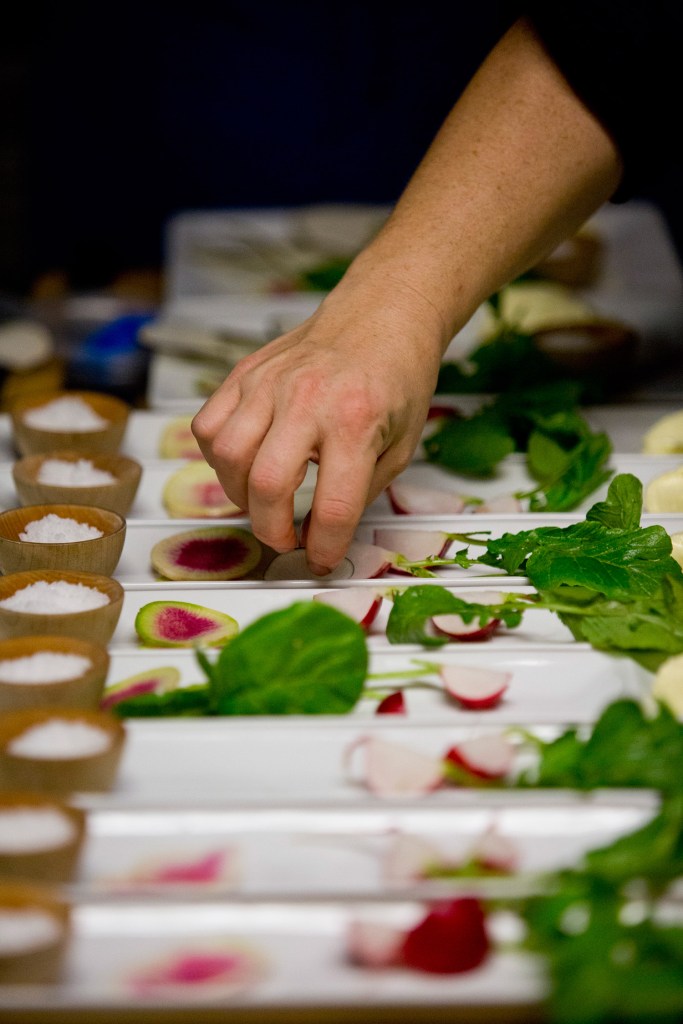

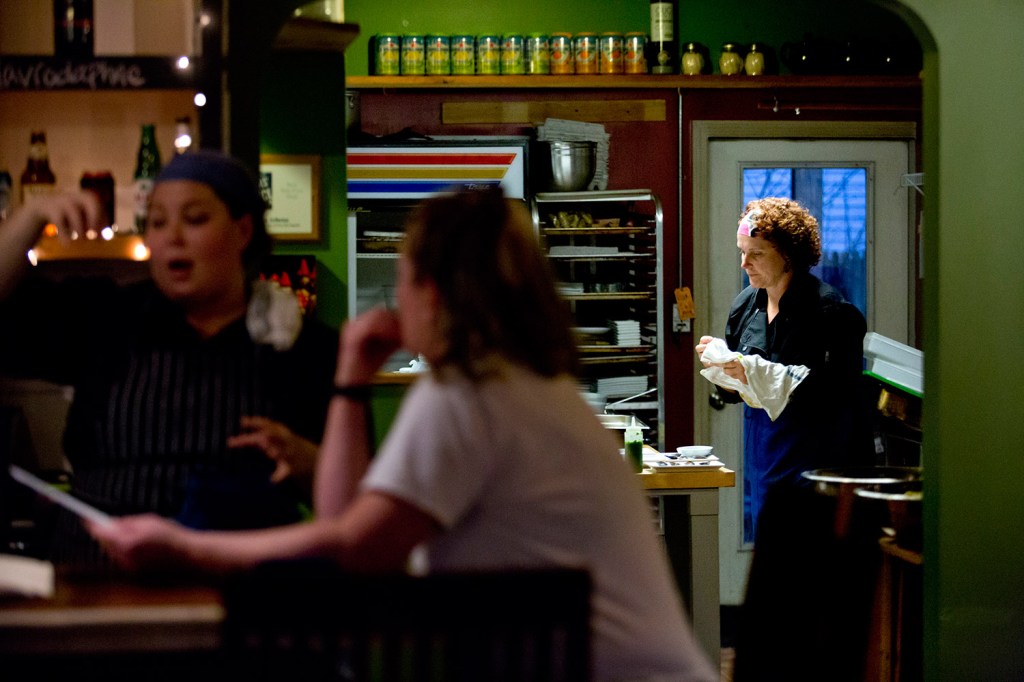
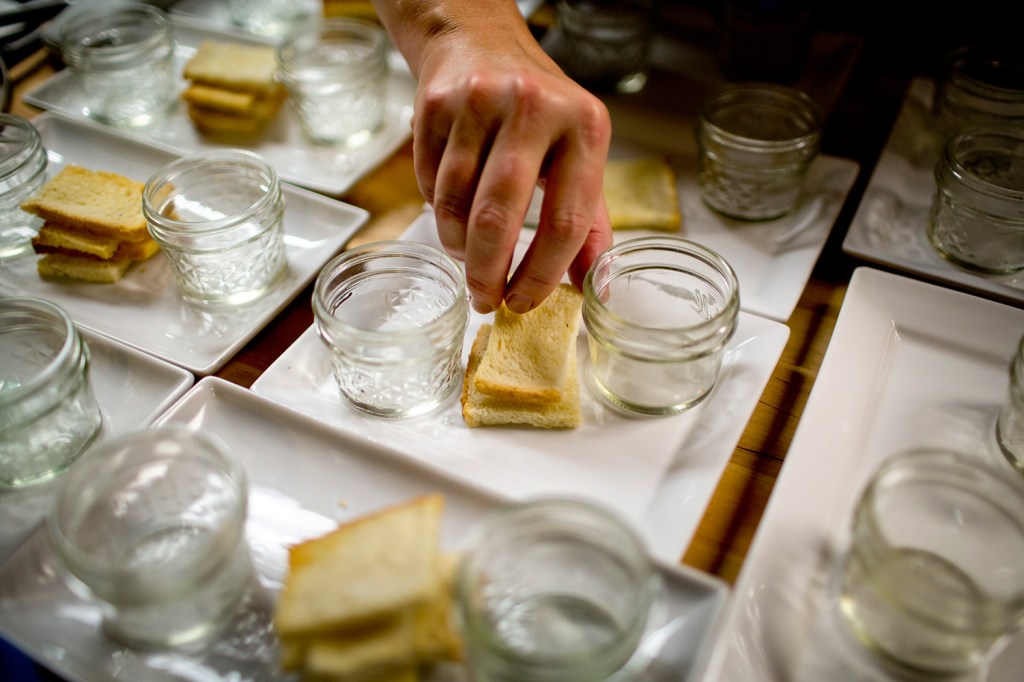
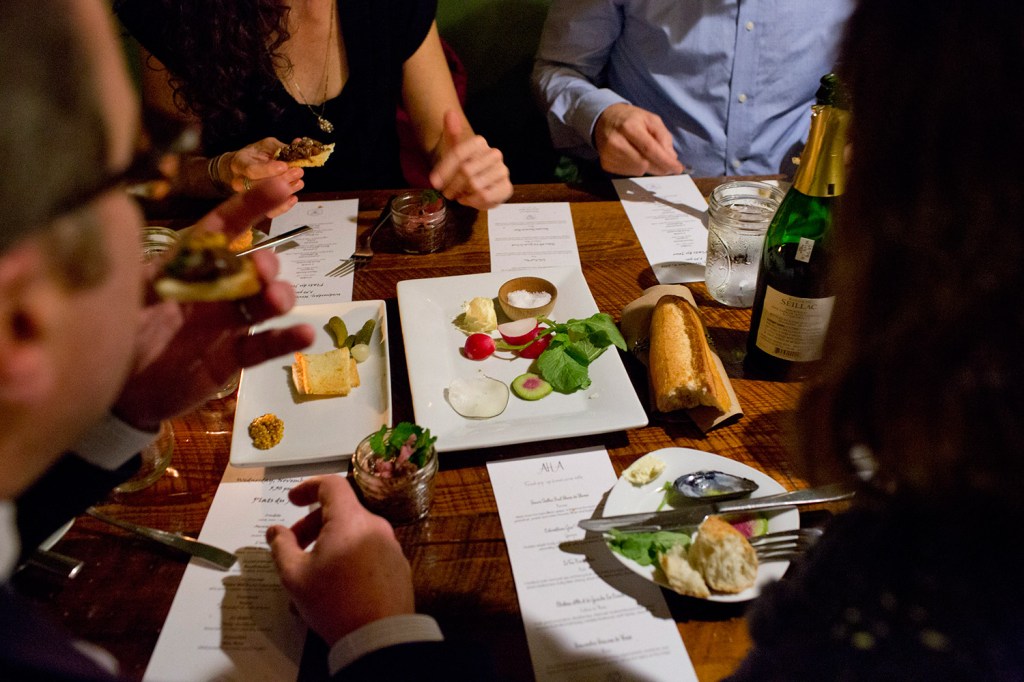
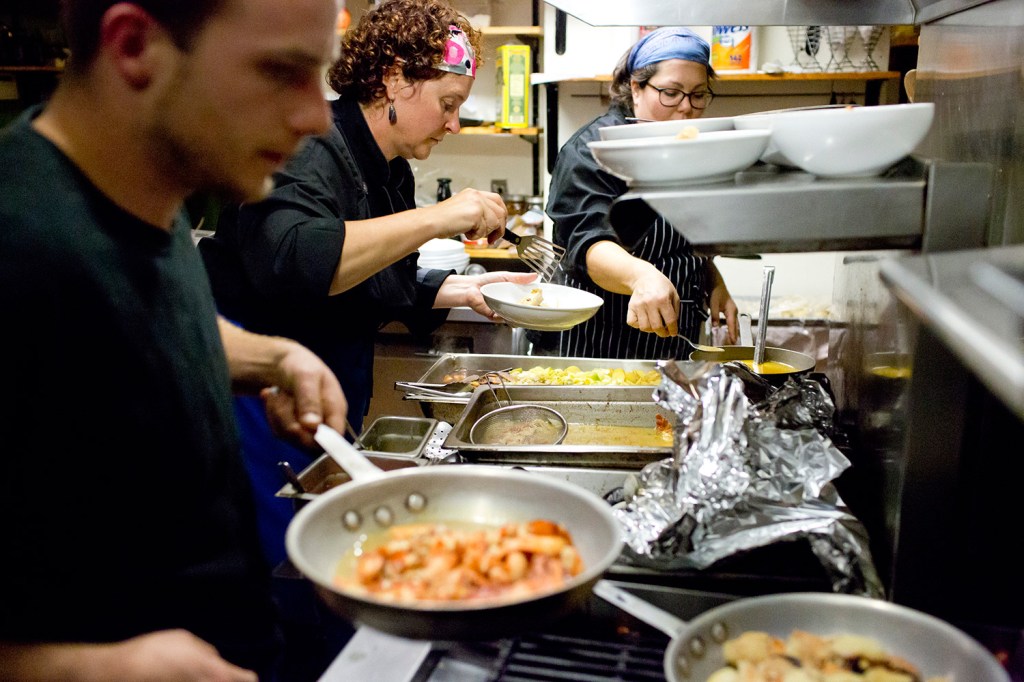
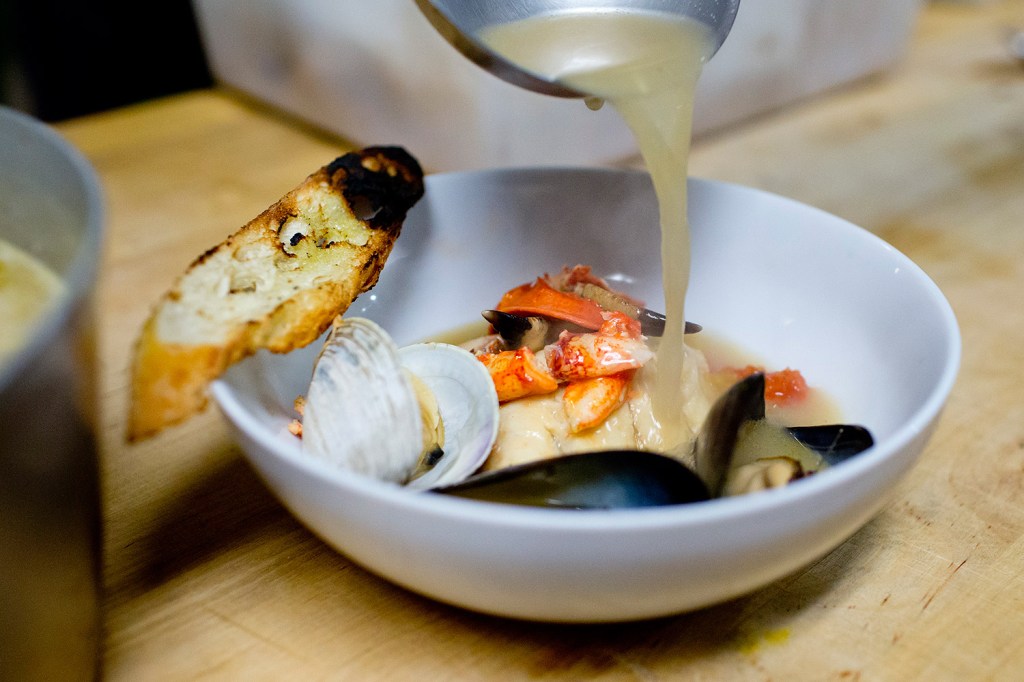
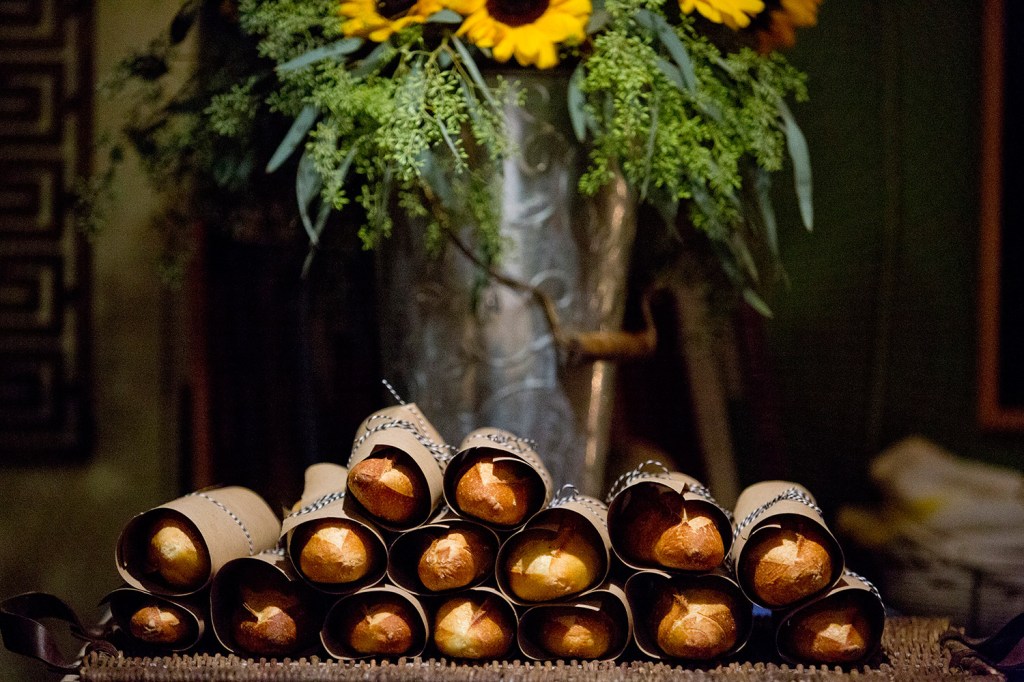

Success. Please wait for the page to reload. If the page does not reload within 5 seconds, please refresh the page.
Enter your email and password to access comments.
Hi, to comment on stories you must . This profile is in addition to your subscription and website login.
Already have a commenting profile? .
Invalid username/password.
Please check your email to confirm and complete your registration.
Only subscribers are eligible to post comments. Please subscribe or login first for digital access. Here’s why.
Use the form below to reset your password. When you've submitted your account email, we will send an email with a reset code.